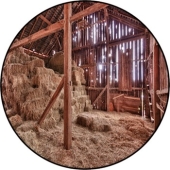








Our Homesteading YouTube Channel: The Grass-fed Homestead








Best luck: satisfaction
Greatest curse, greed
 3
3




 1
1




Peter George wrote:Make yourself a hoop house on timbers made with bought or made arches and cover with 1-2 layers of greenhouse plastic. On pallets with traps underneath or at the edges. Then you've got a sunny place to warm-up & dry the bales, a place to work in in bad weather, and a place for season-extension and/or equipment or animal storage later.
Best luck: satisfaction
Greatest curse, greed
 4
4




Joe
 2
2




"I have a cluttered mind, you might have to tell me again" I'm okay with that. I now have more posts at: www.evvie01.com No central theme yet though, and I'm still learning.





Best luck: satisfaction
Greatest curse, greed












Best luck: satisfaction
Greatest curse, greed

|
WARNING! Do not activate jet boots indoors or you will see a tiny ad:
The new permaculture playing cards kickstarter is now live!
https://www.kickstarter.com/projects/paulwheaton/garden-cards
|





